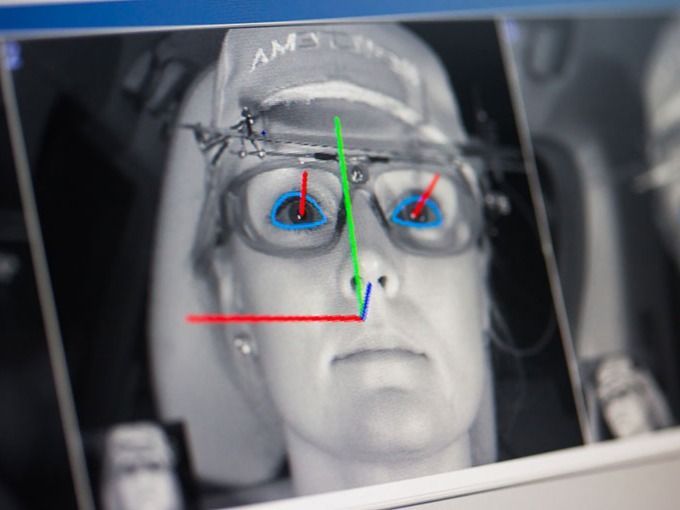Attention! Drive safely
In a recent study with bicyclists, researchers at VTI, Sweden, observed cyclist behavior using eye tracking technology, video recordings, and behavioral coding.
Posted by
Published on
Tue 24 Jan. 2017
Topics
| Data Integration | Driver Behavior | Eye Tracking | Human Factors | The Observer XT |

This blog post is a guest post by Katja Kircher from VTI, the Swedish National Road and Transport Research Institute. In a recent study with bicyclists, researchers at VTI observed cyclist behavior using eye tracking technology, video recordings, and behavioral coding. All data combined enabled them to assess whether the cyclists met the demands in specific situations. Did receiving a text message influence the cyclist’s behavior, particularly in high-attention demanding circumstances? Read the blog post to learn more!
How much attention do we need to pay while in traffic?
Almost all of us drive, cycle, walk, or move around in traffic every now and then. We go to work, to school, on holidays, to the dentist, or to pick up our children. Some of us use the transport system professionally, often to transport goods or people. While we travel, we still want to, or must, deal with other things in addition to driving/cycling/walking. A taxi driver has to book the next passenger, a cyclist might be called by a friend, a parent would like to soothe the crying baby, and a bus driver may have to make an announcement to the passengers.
All those road users, and most likely you as well, divide their attention every now and then, focusing both on traffic and on an additional task. While this has long been known, recently it became a hot topic of discussion with the advent of mobile phones. Is it acceptable or not to use your phone while driving? Is it safer to call instead of text? Is it ok to soothe your crying baby? Or to change track on the music player? If we do, what happens with our attention?

For years, researchers focused on “driver distraction”, investigating how long a driver can look away from traffic safely, and how adding a phone or some other task changes driving behavior, with the goal to determine the influence on crash risk. However, it turned out that this is a very difficult question to answer, and there is still no consensus on what driver distraction really is.
Minimum Required Attention
Our research group explored a new approach to the topic, which we call MiRA, or “Minimum Required Attention”. We assume that each traffic situation makes certain demands on the road user, be it a driver, cyclist, or pedestrian.
Depending on the situation, these demands can be unchallenging; for example, when going along at a leisurely pace on an empty, straight country road. They can also be very complex, such as when navigating a large intersection in an unfamiliar city. As a road user, you have some ability to influence the demands by changing your speed, choosing to overtake or not, or even by choosing not to drive at all under certain circumstances.
Meet the demands
We claim that you as a road user should be regarded as attentive when you meet the demands of the situation, and as inattentive when you don’t. On the lonely country road, you may meet the demands easily, and still have a lot of spare capacity available, which you may devote to other tasks or to daydreaming – in any case you would be considered attentive.
In the unfamiliar city junction, you may be able to just meet the demands, and every additional activity would render you distracted.
What are the specific situational demands?
With this theory as a starting point, we shift the focus of research to the question of whether road users attend to the situational demands, and if they adjust their behavior to accommodate additional tasks while still meeting the demands. As this approach is quite new, we are still defining the situational demands, and how we can assess whether they actually were met by the road users.

Video, eye tracking and more to study bicyclist behavior
In a recent study with 41 bicyclists, we asked them to cycle on a route through the city center, and we sent them a few text messages on the way. They were asked to respond to these messages just as they would have normally, so they had the option to ignore them, answer later, stop for answering, or continue cycling while answering.
Two small video cameras were installed on the cyclist’s bike and on the bike of an experimenter following the cyclist, and we tracked the cyclist’s gaze direction with the help of an SMI eye tracker. These four videos were combined in The Observer XT so that we could later assess whether the cyclists met the demands in specific situations. Did receiving a text message influence the cyclist’s behavior, particularly in high-attention demanding circumstances?
Simple vs complex situation
We are still in the process of analyzing the data of where attention was directed, but we know already that the cyclists chose to read and reply to the messages to a much greater extent while cycling when the context was simple (on a street without car traffic), than in more complex situations. In those contexts, cyclists either delayed their interaction with the telephone or made a dedicated stop.
This is likely connected to the fact that the cyclists could sample enough information in the simple environment, even while texting at the same time, but this was not possible in the more complex scenarios.
And more…
Further studies on the same topic, which we are currently conducting and have planned, include attention distribution when driving a rather highly automated car on the motorway while conducting an additional task; attention distribution of cyclists and car drivers in the same environment; and self-paced visual occlusion while driving in different simulated scenarios.
We hope to be able to operationalize our theory enough that it will be a tool that can be used when assessing the suitability of infotainment systems for road users, to improve education in automated driving, and for other applications connected to road user attention.
Contact details
vti, Sweden
Katja Kircher, PhD, Research Leader
e-mail: [email protected]
Interested in human behavior research? Read more on 'How to study human behavior'!
Related Posts

3 reasons to join us at Applied Human Factors & Ergonomics meeting (DriveLab)

Alexa, Siri, Google – Are voice assistants the future of marketing?

